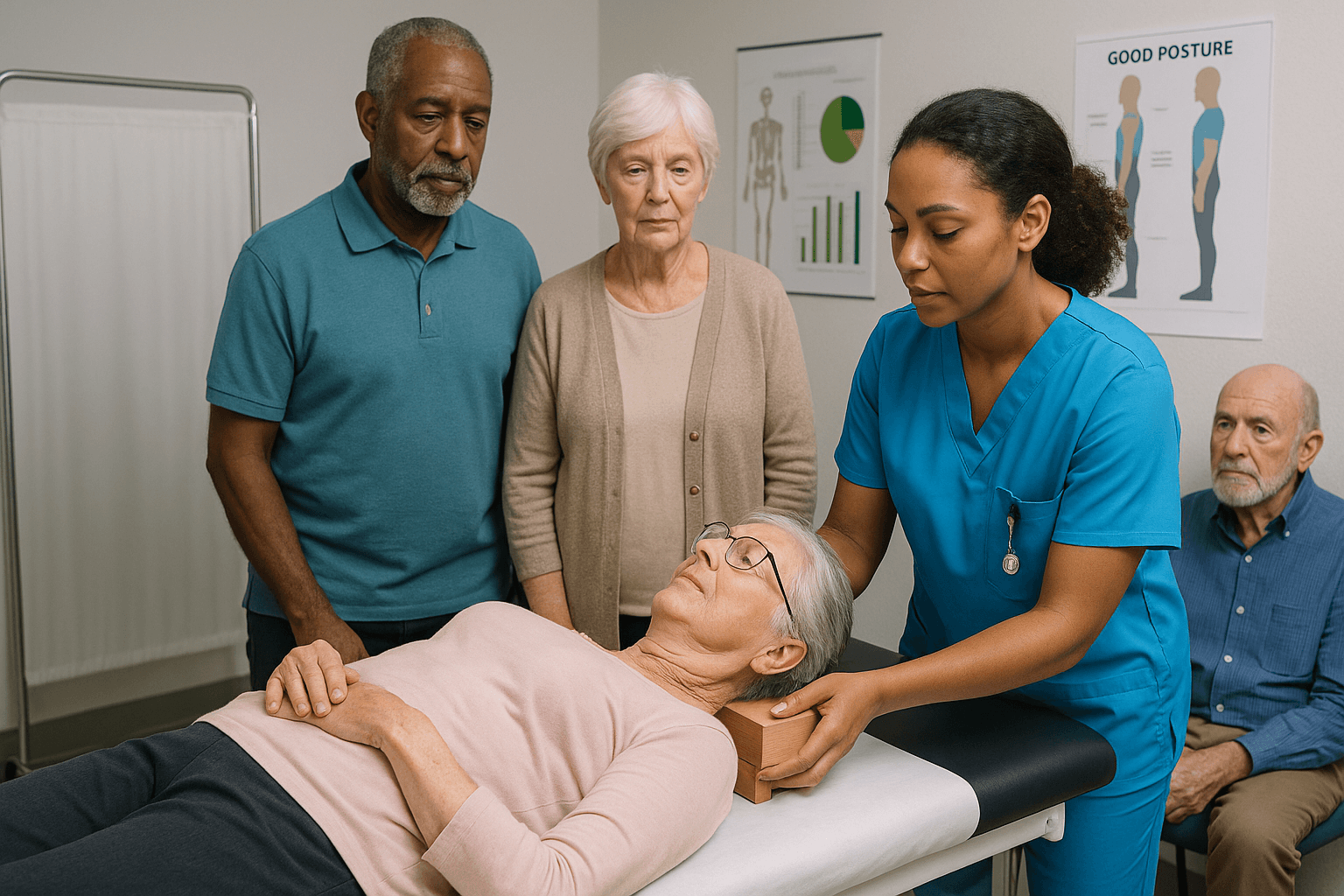Let’s be blunt: most desks were not built for your body. If your neck aches, shoulders slump, or lower back screams by noon, your desk setup may be silently wrecking your posture. At Upright Posture, we treat the consequences of poor workstations daily—most clients don’t even realize that desk height is a key culprit behind their persistent pain.
You don’t need another ergonomic checklist. What you need is insight into how desk height in posture correction plays a bigger role than you think—and how to fix it today for lasting structural change.
Jump to:
TLDR – Quick Guide
- Sitting too low? You’re over-flexing the spine and compressing your core.
- Sitting too high? You’re hunching over, elevating shoulders unnaturally.
- Desk height affects spinal alignment, head positioning, and breathing.
- A proper setup supports Advanced BioStructural Correction™ (ABC) by reducing compensatory stress.
- Most people see immediate posture improvement by adjusting workstation height—not just their chair.
Detailed Breakdown
How Desk Height Affects Structural Alignment
Desk height isn’t just about comfort—it’s about function. When your desk is too low:
- You collapse forward.
- Your shoulders roll inward.
- Your head juts forward, overloading the cervical spine.
This posture leads to mechanical stress your body can’t self-correct. Over time, it contributes to:
- Rounded shoulders
- Anterior pelvic tilt
- Shallow breathing
- Chronic neck and back pain
The ABC Connection
At Upright Posture, we practice Advanced BioStructural Correction™. This technique realigns your body to a structurally sound state. But here’s the kicker: the way you sit either supports this correction—or undoes it.
When your workstation fights your spine’s natural posture, the ABC treatments can be undone. That’s why assessing your desk height isn’t optional—it’s essential.
The Ideal Desk Setup
- Chair Height: Feet flat on the ground with thighs angled downward. I.e. knees slightly below the hips.
- Desk Height: Your elbows should be at a 90-degree angle when typing.
- Monitor Height: Top of screen at or just below eye level.
- Keyboard Position: Directly in front of you to prevent twisting.
- Seat angle: Use your ABC seat wedge to keep your pelvis neutral.
Even these small changes can relieve pressure on the spine and allow our structural corrections to work faster and more permanently.
Real Client Stories
We’ve seen patients experience a 50% drop in daily pain levels just by fixing workstation ergonomics. In one case, a client with chronic upper back pain was unknowingly sitting at a desk 3 inches too low. After adjusting the height and beginning ABC treatments, she reported visible posture improvement in two sessions and complete pain relief within weeks.
Key Takeaways
- Desk height is not just an ergonomic preference—it’s a structural health factor.
- Poor desk height can undo the benefits of even the best posture treatments.
- Aligning your desk setup with your body mechanics helps ABC techniques work faster and more effectively.
- A proper workstation setup can lead to noticeable posture changes in days, not months.
- This isn’t about a fancy chair—it’s about positioning your body to thrive.
FAQs
1. How do I know if my desk is too low?
If your shoulders hunch or your elbows angle down while typing, your desk is likely too low. Over time, this posture compresses your spine and contributes to pain.
2. Can desk height alone fix posture problems?
No, but it’s a vital piece of the puzzle. Pairing workstation adjustments with treatments like Advanced BioStructural Correction™ offers more permanent posture improvements.
3. What’s the fastest way to test proper desk height?
Sit upright with your feet flat on the floor. If your elbows form a 90-degree angle at your desk, you’re close. Adjust your desk height or use risers to fine tune.
4. Is a standing desk better for posture?
Standing desks can help, but only if used correctly. The key is dynamic posture—switching between sitting and standing to reduce static load on the spine.
5. What should I fix first—desk or chair height?
Start with your chair height so your feet are grounded. Then adjust the desk or use keyboard trays to achieve a 90-degree elbow angle.






